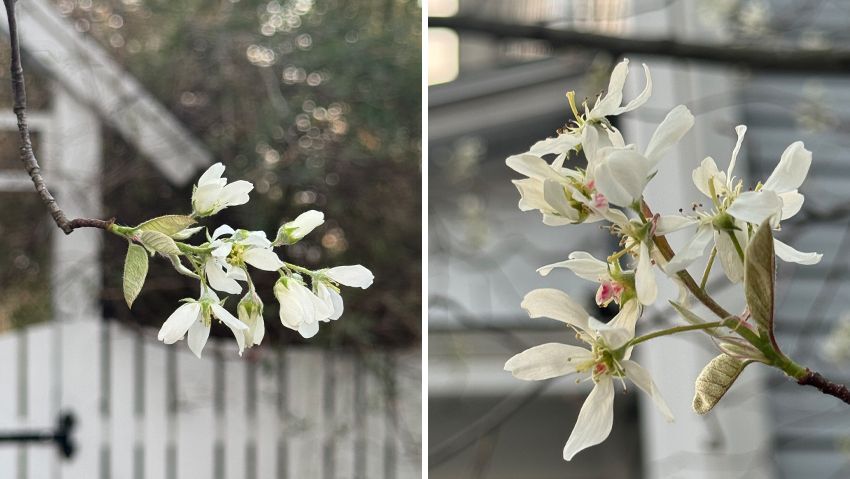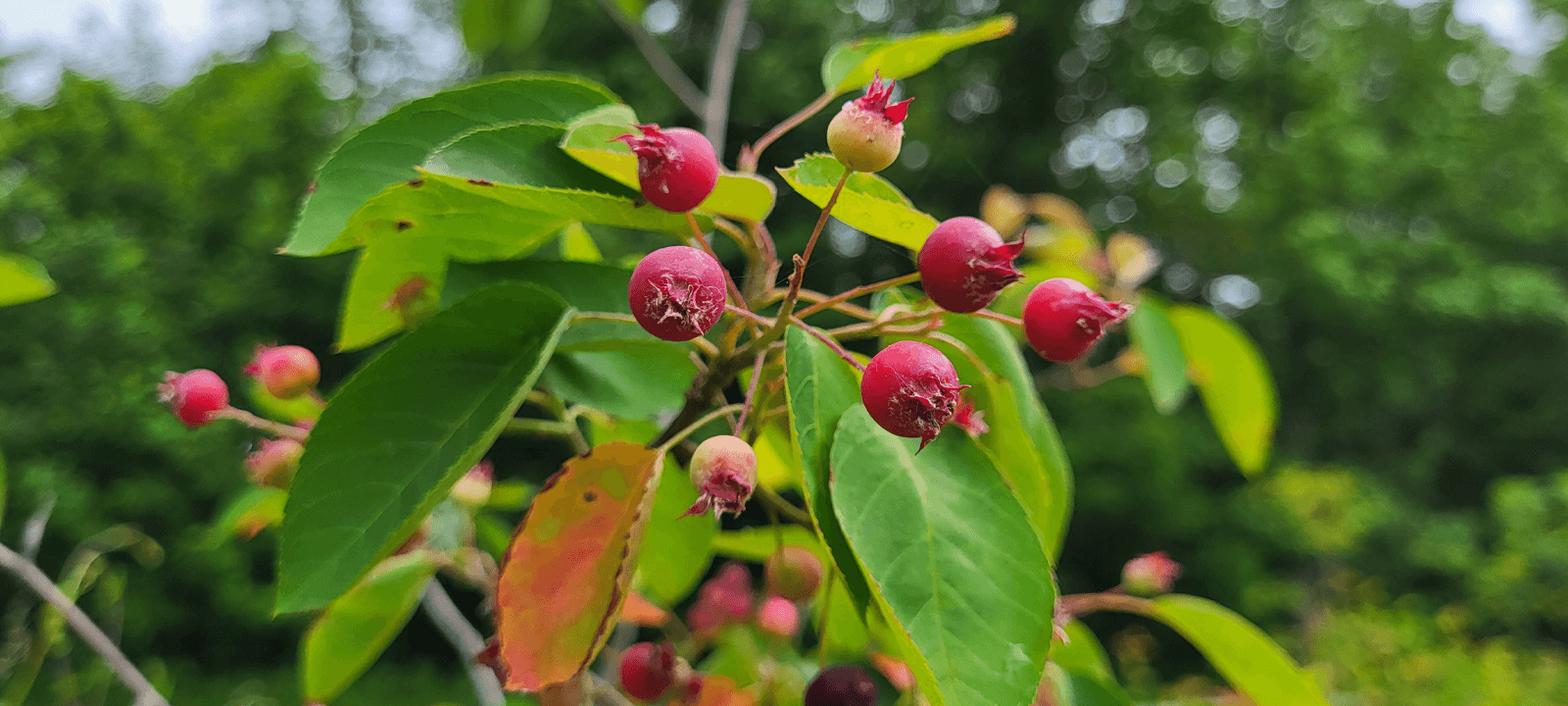Native Tree of the Year
Adkins Arboretum’s Native Tree of the Year highlights the ecological and ornamental value of native trees to promote their protection in natural areas and use in cultivated landscapes.
2025 Native Tree of the Year: Serviceberry (Amelanchier canadensis)

Photos by Ryder Cario.
Quietly blending into the upland forest plant community at Adkins Arboretum much of the year, serviceberry (Amelanchier canadensis) is an understory tree that may be spotted in early Spring when its delicate white blooms emerge ahead of the leaves and in Fall when its foliage brightens to an orange-red hue. Considered a large shrub or small tree, this single- or multi-stemmed deciduous woody plant may reach 15-30’ at maturity. The five-petaled clusters of white blooms develop into tiny green berries that plump up as they ripen through stages of red and finally dark purple when they are edible. Similar in appearance to blueberries, these fruits have been used to make jams and pies, although, often, birds may find them quickest.
Because the serviceberry requires little maintenance, it works well planted in the landscape, in naturalized areas, and partly shady pockets with soils that are average to wet. One area to avoid planting is near cedar trees since serviceberries are an alternate host to the cedar-apple rust. When planted nearby, both species will sport unsightly orange growths at varying times of the year. The Maryland DNR includes this species on their Recommended Tree List.
In addition to the fruits enjoyed by humans, this plant is an important food source for many birds and mammals. Birds like the cardinal, bluebird, and tanager enjoy the berries, while browsers will munch on the foliage. In our area, approximately 91 species of butterflies and moths such as Interrupted Dagger Moth (Acronicta interrupta), Small-eyed Sphinx (Paonias myops), Banded Purple, Red-spotted Admiral (Limenitis arthemis), and the Luna moth (Actias luna) use the serviceberry as a host plant, meaning it is a necessary part of their life cycle for where they will lay their eggs so that newly-emerged caterpillars may have their required food source readily available. Pollinators, including native bees, bumblebees, honey bees, beetles, wasps, and flies, visit the serviceberry’s flowers.
Native throughout the eastern portion of North America, ranging from Alabama to Newfoundland, this serviceberry, also known as Canadian serviceberry, shadbush, shadblow, or Juneberry, is especially common throughout wet areas in the Atlantic coastal plain. This popular species has close relatives in the eastern U.S., such as Allegheny serviceberry (Amelanchier laevis) and downy serviceberry (Amelanchier arborea). In the western U.S., the most abundant are the Saskatoon serviceberry (Amelanchier alnifolia) and Utah serviceberry (Amelanchier utahensis).
The serviceberry is the subject and central metaphor of author Robin Wall Kimmerer’s acclaimed book The Serviceberry: Abundance and Reciprocity in the Natural World. This story is a must-read included on the Adkins Arboretum’s Book Club list for 2025. We encourage you to join us for the Book Club discussion in May or read up on your own!
Leslie Hunter Cario
Director of Horticulture and Natural Lands

